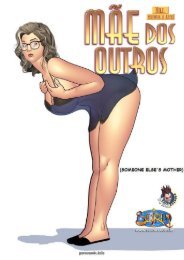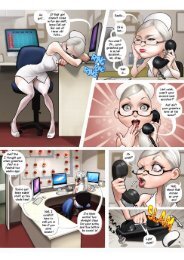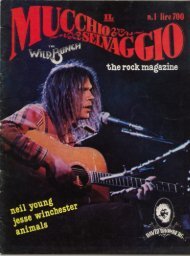AmericanCinematographer201201
Create successful ePaper yourself
Turn your PDF publications into a flip-book with our unique Google optimized e-Paper software.
Land required several previsualizations,
“and all of them were very complicated,”
says Kwiatkowski. “There were 18 shots
of Joey, all tracking shots, all off different
kinds of platforms.”
One such shot begins with the
camera inside a trench. Kwiatkowski
explains, “Joey jumps over the trench,
and the camera actually follows him. He
runs alongside the trench, and we’re
looking up at him. Then he tries to jump
again and falls in, and then we’re tracking
with him inside the trench. Those
trenches were narrow, and the terrain
was extremely rough. We used the
suspension on the Bickers Racing Quad
and mounted Chapman Leonard’s
Large Vibration Isolator to eliminate
most of the bumps. This combination
enabled the Scorpio head to stabilize the
image perfectly. It’s a pretty amazing
shot.”
Another remarkable camera
move involved the Akela. The shot starts
in the trench with Albert, Joey’s original
master. “At first it looks like it could be a
Steadicam shot, but then the camera
follows Albert up a ladder and out onto
the battlefield, ending with a high-angle
view,” says Kwiatkowski. “The Akela
does that; it’s such a long arm, and the
arc to it isn’t an issue.”
The most dramatic palette in War
Horse appears at its conclusion, when
various characters are shown silhouetted
against a pink-orange sky in Devon. “It
looks glorious — and totally fake!” says
Kaminski. “We wanted to go that way
because it’s such a heroic and mythical
moment. I’m very proud of the look
because it’s right for the story, and it was
done in-camera. I had four or five filters
on the lens — red, orange and ND. Each
was cutting the light, so we ended up
side-lighting the actors with several
18Ks so they wouldn’t go black.
“We did very little CGI in this
movie,” he adds. “[Digital effects] were
used only to remove a horse trainer from
a shot or a rider dressed in a greenscreen
suit, which was necessary because the
horse couldn’t go through the battlefield
at night without someone to guide him.
Everything else was live photography.
What you see is what you get.” ●
2.40:1
TECHNICAL SPECS
4-perf Super 35mm
Arricam Lite, Studio;
Arri 435, 235
Arri/Zeiss Master Prime,
Angenieux Optimo
Kodak Vision3 250D 5207,
500T 5219
Digital Intermediate
61













